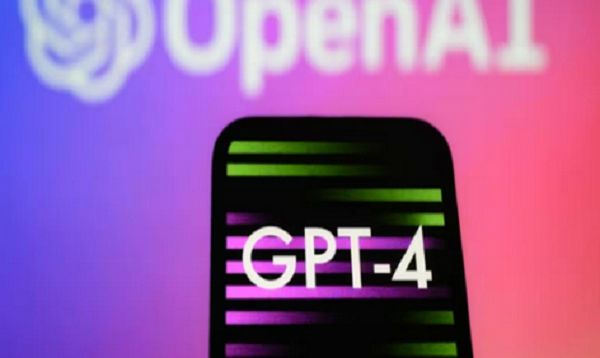Ontario classrooms rapidly growing in AI use
The province is being called on to help navigate the uncharted territory of artificial intelligence in schools, as educators worldwide grapple with how to responsibly use these rapidly evolving technologies.
Trustee Markus de Domenico will present a motion on Thursday at the Toronto Catholic District School Board, calling for a provincial strategy on the use of AI in education — an issue that is top of mind for the education minister.
The province is being called on to help navigate the uncharted territory of artificial intelligence in schools, as educators worldwide grapple with how to responsibly use these rapidly evolving technologies.
Trustee Markus de Domenico will present a motion on Thursday at the Toronto Catholic District School Board, calling for a provincial strategy on the use of AI in education — an issue that is top of mind for the education minister.
Not a single school board in the province has an informed policy on the use of AI in the classroom, de Domenico told the Star, calling its use “both exciting and frightening.”
“This is a lightning-speed technology that is rapidly, rapidly moving into society … So why, as educators, are we are waiting?”
The technology, already in use by many students and classes, has the power to innovate teaching practices — but also brings various challenges, namely that students can cheat.
For instance, kids use YouTube summary tools that capture key points in videos, so they don’t need to watch them. They use voice-to-text tools in science class so that, as they make verbal observations during an experiment, it’s automatically transcribed. They use free AI tutoring tools to provide step-by-step help during homework. And they can use AI tools for writing assignments, prompting them to create text about a particular topic or requesting alternative viewpoints.
Teachers also use AI. For example, during a reading lesson, text can be entered into a tool and have the grade level adjusted to better meet the students needs. And teachers can personalize activities to meet individual children’s needs, so if a student doesn’t speak English the activity can be translated and they can provide answers in their first language.
AI guidance needed
De Domenico told the Star that getting a handle on AI isn’t something the board can do on its own, adding “I’m looking for the province to really bring us up to speed because they have the resources.”
He wants the TCDSB chair to write Education Minister Stephen Lecce requesting a “provincial strategy” on AI. That could include a provincial committee to help boards understand best practices; a conference that explores key issues around AI use; and ongoing support and strategies for educators.
De Domenico says guidance on AI is key because while it’s a valuable tool for teachers, it can also be used by students to cheat. (In 2022, the launch of OpenAI’s ChatGPT — an automated writing tool that creates text on demand — put generative AI in the spotlight, as it became the fastest growing app ever.)
And because AI can be used for fraud, De Domenico says it’s crucial for the board to understand it at a corporate level, noting the TCDSB has an annual budget of more than $1 billion. Most importantly, he says, it’s vital to prepare students for “an AI-influenced world” and “understand the dangers that AI can present to students and our entire system.”
A notice of motion will be formally entered at a Thursday board meeting, and the matter will be discussed at a March 21 meeting.
Provincial priority
The Ministry of Education says AI use in schools is a priority for Lecce, who’s well aware of the opportunities and challenges.
“Well before this motion was introduced, Minister Lecce spoke with school board chairs and directors of education, where he indicated that we will develop an approach to address both the risks and opportunities associated with the rise of artificial intelligence for students in schools,” said his spokesperson Isha Chaudhuri.
“The minister believes, with proper safeguards, artificial intelligence can be an effective tool to aid in learning, which is why he will continue to consult with experts to harness a productive and safe application of artificial intelligence in the classroom.”
Transforming education
Although no Canadian province has issued advice on AI use in the class, several boards are working to create their own policies, guidance and procedures, including the Toronto District School Board, Canada’s largest.
Ottawa Catholic School Board is “embracing AI” and currently running pilot projects to see what works, says Director of Education Tom D’Amico. While some teachers would like tools such as ChatGPT banned, he says, “We’re not in an age, in 2024, where we don’t want our kids using technology.” Instead, he says teachers and educators may need to change how they assess students so it’s not easy to cheat.
He, and others from Canada, are looking at best practices in the United States, where seven states have provided schools with guidance. For instance, California recommends that student safety and data privacy be prioritized; kids learn about AI literacy; and that staff and students are aware of the potential inaccuracies and biases of AI.
D’Amico says teaching AI literacy is crucial to bridging the digital divide and putting students on an equal playing field. He points to teens looking for a summer job as an example. Those who know how to use AI can generate a cover letter and resume specific to a job posting, giving them an advantage over those who don’t .
This article was reported by The Star












